Exploring the Significance of Al Ras Building in Dubai
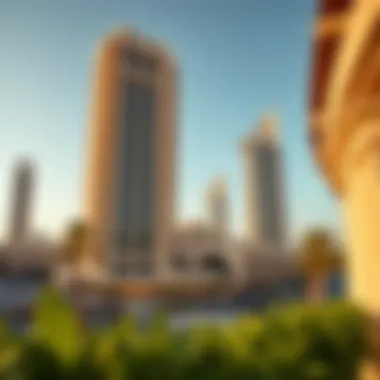
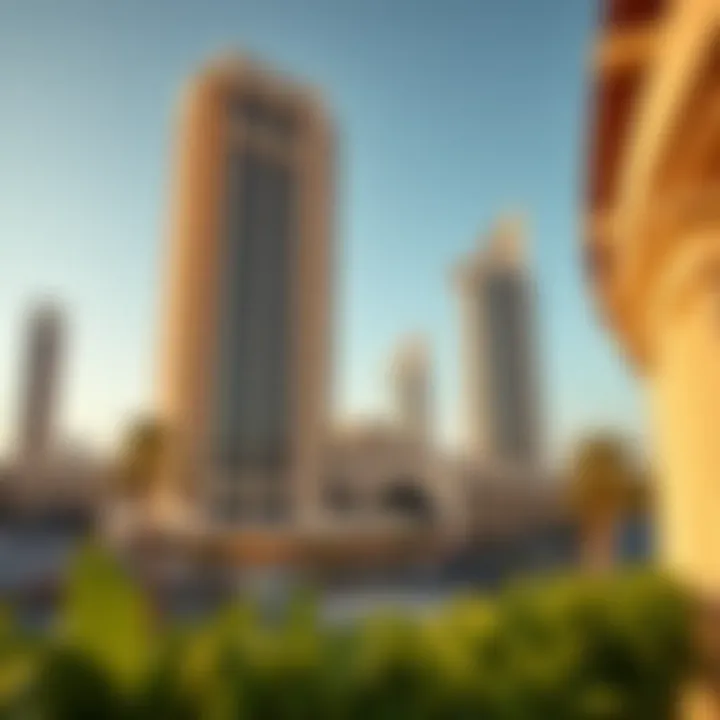
Intro
In the bustling heart of Dubai lies the Al Ras Building, a structure that does more than provide shelter. It stands as a testament to evolving architectural practices and the vibrant culture of the city. With its unique design and historical context, it is pivotal in shaping the landscape of Dubai's real estate market. Understanding the significance of the Al Ras Building ensures that potential investors, realtors, and homeowners grasp its role amidst the ever-changing skyline of this dynamic city.
As we navigate through the various aspects of this building, we'll explore current market trends, the viability of investing in this area, and how the architectural design contributes to the overall allure of Dubai. A closer look at its surroundings also reveals how it has influenced emerging neighborhoods and developments. This analysis aims not only to shed light on the past and present of the Al Ras Building but to paint a clear picture of what the future holds for investors and residents alike. So, whether you’re thinking about moving to Dubai or simply interested in its architectural advancements, this deep dive will provide you with the comprehensive insights you need.
Intro to Al Ras Building
Al Ras Building stands as a pivotal structure in Dubai, often overlooked amid the gleaming skyscrapers and ultramodern developments that dot the skyline. Its significance lies not just in its physical presence but also in the stories it encompasses and the cultural narratives it embodies. This section delves into why Al Ras Building warrants attention in the exploration of Dubai's architectural fabric, especially for investors, realtors, and residents interested in the rich juxtaposition of the old and the new.
Overview of Al Ras Building
Nestled in the heart of the historic district of Dubai, Al Ras Building provides a striking contrast to the contemporary architecture nearby. Originally built in the early 20th century, this building is a testament to the architectural styles that once flourished in the region. Its design showcases traditional features such as mashrabiya windows and intricate stonework that reflect the skills of local artisans.
Its strategic location contributes to its allure. The building overlooks the bustling Deira area, characterized by markets and traditional souks that add a unique charm to the surrounding environment. As Dubai has evolved, Al Ras has remained an anchor amidst swirling changes, offering both commercial spaces and a glimpse into the rich history of the emirati culture.
Significance in Dubai's Urban Landscape
Al Ras Building stands as a landmark that bridges the past with the present. In the context of Dubai's relentless march towards modernization, it serves as a crucial marker of the city’s identity.
- Cultural Heritage: The building embodies the spirit of Dubai’s early urbanism, making it significant as a cultural artifact. It reminds us of the time before globalization transformed the region, linking generations of residents and visitors to its roots.
- Economic Impact: From a commercial standpoint, the Al Ras Building plays a vital role in the economy of the Deira district. With businesses thriving within its walls, it continues to contribute to the local economy while supporting job creation for the community.
- Social Hub: This location is not just a building; it acts as a social hub. Many locals frequent the surrounding area, where traditional practices and modern consumerism coalesce, thereby fostering a vibrant community spirit.
In summation, understanding Al Ras Building’s significance is essential for recognizing the broader context of Dubai's urban development. As investors and residents look towards the future, this structure provides valuable insight into the cultural and economic layers that form the backbone of the emirate's rapid transformation. Its potential for attracting interest—from cultures old and new—positions it as a unique opportunity in the ever-evolving real estate market.
"Every brick and beam of Al Ras tells a story, reflecting a unique intertwining of modern aspirations and traditional legacies."
This narrative sets the stage to investigate deeper into the architectural nuances, historical timelines, and the overarching impact that the Al Ras Building has on its community and the city at large.
For a deeper exploration of old Dubai’s architectural wonders, consider visiting these resources: Wikipedia and Britannica.
Architectural Features
The architectural features of the Al Ras Building are not merely components of its structure, but a reflection of its role within the fabric of Dubai's urban landscape. Each element serves both functional and aesthetic purposes, creating an ambiance that speaks not only of modernity but also of local culture. For investors and potential residents, understanding these features is essential, as they contribute significantly to property value and desirability.
Design Elements
The design of Al Ras Building is marked by its striking facade, which combines both contemporary aesthetics with nods to local architectural traditions. With clean lines and geometric shapes, the building evokes a sense of sleek sophistication. The extensive use of glass allows for natural light to flood the interiors, enhancing the atmosphere while reducing reliance on artificial lighting.
In addition to visual appeal, the design takes into consideration functionality; the layout promotes efficient use of space, optimizing both commercial and residential areas. Large balconies and terraces are also integrated into the structure, not just for leisure, but to foster a sense of community among residents.
"Good design is not just about looks; it's about feeling at home too."
This blend of aesthetics with purpose ensures that occupants experience not only comfort but also connectivity, striking a chord with both modern sensibilities and cultural nuances. Such elements are attractive not just personally, but also for investors looking for long-term returns in an evolving marketplace.
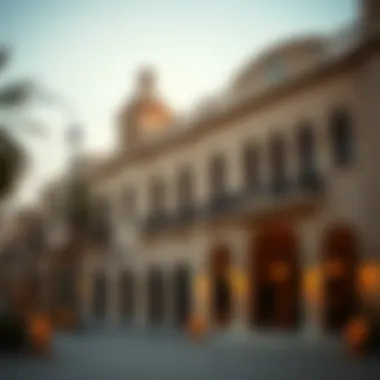
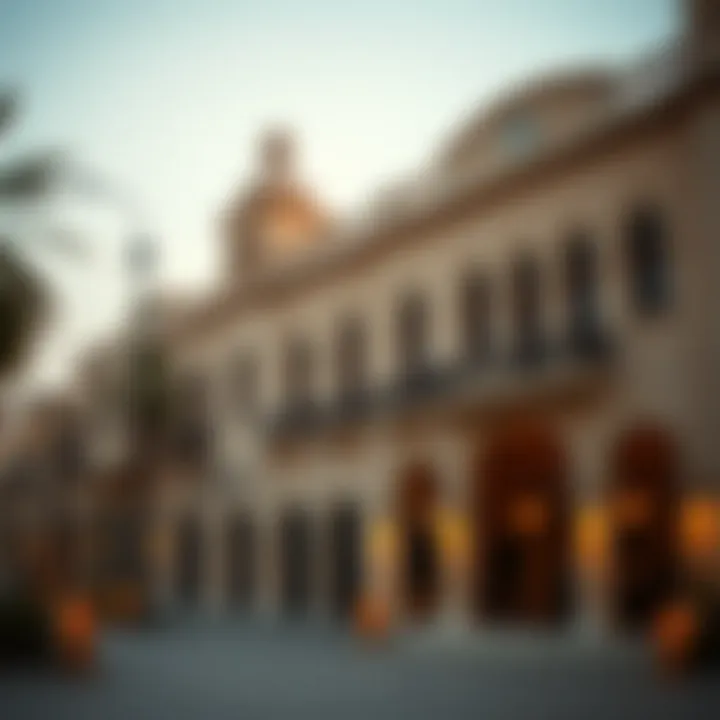
Materials and Construction Techniques
Al Ras Building stands as a testament to innovative construction methods and premium material choices. The exterior cladding makes use of durable and weather-resistant materials that withstand the harsh Dubai climate while maintaining their visual appeal over time. The use of reinforced concrete has become the norm, allowing for increased structural integrity and longevity.
Furthermore, the building incorporates advanced construction techniques that streamline the building process, thereby reducing costs while ensuring high safety standards. The careful integration of insulation materials contributes to energy efficiency, resonating with the current trends favoring sustainable living environments. Investing in properties with such reliable construction methods often yields significant benefits, as future maintenance costs are minimized.
Sustainability Practices
Sustainability is a crucial consideration for new developments in urban areas, and Al Ras Building is no exception. By implementing eco-friendly practices, the building not only respects the environment but also appeals to a growing market segment that prioritizes sustainability.
Several features enhance the sustainability of Al Ras Building:
- Rainwater harvesting systems to utilize natural resources efficiently.
- Energy-efficient appliances installed across residential units, minimizing energy consumption without sacrificing comfort.
- Green roofing solutions that help regulate building temperature, thereby lowering energy usage for cooling.
These sustainable practices are increasingly becoming non-negotiable selling points for both renters and investors who share values around eco-conscious living. The foresight in including such features will likely serve as a competitive advantage in attracting a discerning clientele.
Historical Context
Understanding the historical context of the Al Ras Building provides not just a backdrop to its architectural wonders but also underlines its importance in the urban narrative of Dubai. As one of the city's longstanding structures, its development trajectory mirrors Dubai's evolution from a modest coastal settlement to a bustling metropolis. This section explores significant milestones and cultural nuances that shaped the Al Ras Building, revealing how its existence is interwoven with the broader socio-economic tapestry of the region.
Timeline of Development
The journey of the Al Ras Building, like many landmarks in Dubai, is marked by several key milestones that reflect the changing times and ambitions of the city. The timeline below outlines pivotal moments in the building's history:
- 1960s: Initial planning phases during a time when Dubai was transforming, laying the groundwork for future developments.
- 1975: Completion of the Al Ras Building, marking its entry into Dubai’s iconic skyline. The architectural style chosen reflected the practical yet growing aesthetic preference of that era.
- 1980s: The building witnessed an influx of businesses, acting as a commercial node in the heart of the Deira district, which was rapidly becoming a commercial hub.
- 1990s to Early 2000s: The global economic boom saw the building adapt by incorporating more modern amenities, attracting diverse enterprises.
- 2010s: Emphasis on renovations and sustainability, aligning with Dubai’s vision to become a leader in environmentally friendly urbanization.
This timeline not only highlights the architectural changes but also demonstrates the shifting dynamics of the Dubai economy and its growing global relevance.
Cultural Impact
The Al Ras Building has served more than just a functional purpose; it embodies a spirit of community and cultural melding. Occupying a prime locale, it stands as a symbol for many expatriates and locals alike, representing opportunities and differences merging in one space. Some key cultural aspects of the building's influence include:
- Cultural Exchange: As businesses thrived within its walls, the Al Ras Building fostered an environment ripe for cultural dialogue, facilitating interactions among diverse ethnic groups.
- Local Identity: The building has become an emblem of Deira's urban identity, reflecting the architectural trends of previous decades, while simultaneously serving modern needs.
- Community Activities: Seasonal festivities and local markets often take place in the vicinity of the Al Ras Building, making it a focal point for both business transactions and cultural celebrations.
Moreover, the building's ability to adapt over the years speaks volumes about the local and expatriate communities in Dubai, where multicultural living thrives. It stands as a reminder that structures are not just bricks and mortar but are deeply connected to the lives and stories of the people they shelter.
Current Use and Functionality
The Al Ras Building stands as a testament to Dubai's remarkable evolution from a humble trading post to a bustling metropolis. The current use and functionality of the Al Ras Building play a critical role in understanding its standing in today’s urban framework. This structure is not merely a physical edifice; it embodies the intricate relationship between commercial ambitions and residential needs, serving both as a hub for business activities and a home for many individuals. The importance of dissecting these aspects lies in grasping how the building contributes to the economic vibrancy and community fabric of the area.
Commercial and Residential Spaces
Al Ras Building's dual-purpose design encapsulates the needs of diverse user demographics. The commercial spaces are prime for a variety of enterprises, from retail shops to service providers. Entrepreneurs find a welcoming environment where the foot traffic is dynamic, primarily due to its proximity to key markets and transport hubs. This boosts visibility, making it an attractive choice for new businesses seeking to establish themselves in a competitive landscape.
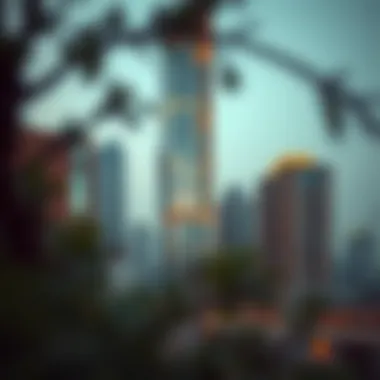
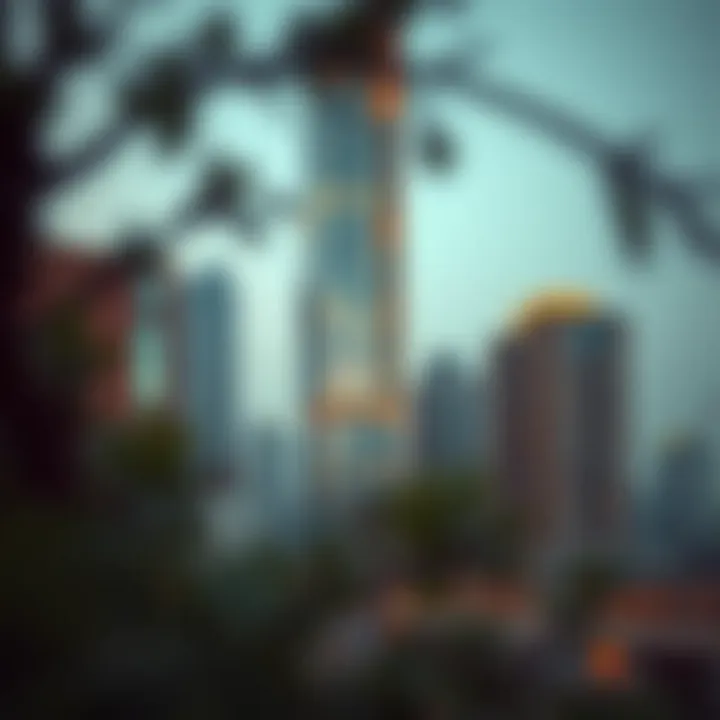
Conversely, the residential areas within the building cater to a population seeking live-work flexibility. Small families and professionals alike appreciate the convenience of living steps away from various amenities. Real estate experts assert that such mixed-use developments enhance property values by fostering community engagement and convenience. The architectural design, which melds residential comforts with commercial viability, creates an appealing lifestyle for residents and promotes a symbiotic relationship that elevates both spaces.
"The hybrid use of the Al Ras Building not only meets the demands of the present but also reflects an adaptable vision for future urban living."
Amenities Offered
Amenities at the Al Ras Building have been thought through with user experience in mind. These include essential services such as grocery stores, cafes, and health facilities, ensuring that residents have effortless access to daily necessities. Furthermore, such features amplify the attractiveness of the building to prospective tenants and buyers, making it a prime investment opportunity.
Residents can also take comfort in facilities like communal spaces where social interactions can thrive, enhancing a sense of community amongst dwellers.
In summary, the functionality of the Al Ras Building is not just about the spaces themselves but about how they cater to the lifestyles of those who inhabit them. Understanding the intricate blend of commercial and residential features alongside the amenities offered provides a holistic view of how this structure fits into the larger puzzle of urban living in Dubai.
Surrounding Area and Community
The Al Ras Building holds not only a unique architectural identity but also plays a significant role within its surrounding area in Dubai. Understanding the community dynamics around this structure is essential for anyone considering investment or relocation. The neighborhood encompasses a blend of traditional and modern influences, creating a vibrant urban tapestry that reflects the multifaceted nature of Dubai itself.
Access and Transportation
Accessibility is one of the crown jewels of the Al Ras community. The area is well-connected through an extensive network of public transportation.
- Metro Stations: The closest metro station, Al Ras, is just a stone's throw away, providing residents and visitors with direct access to various parts of the city. This is particularly crucial for those commuting for work or leisure.
- Bus Routes: A considerable number of bus routes service the area, which further enhances connectivity. The buses tend to run at regular intervals, making it convenient for people to travel without relying on private vehicles.
- Road Networks: With major roads like Al Maktoum Road and Al Ittihad Road nearby, getting in and out of the area is relatively seamless. This judicious planning not only benefits those residing in the Al Ras Building but also contributes positively to the local economy by attracting visitors and businesses.
"Accessibility in urban environments is not just a convenience; it's a necessity that fosters growth and community engagement."
Neighborhood Characteristics
The characteristics of the Al Ras neighborhood are as diverse as the city itself. Here are a few aspects worth noting:
- Cultural Heritage: The area is steeped in history, with landmarks and markets that showcase Dubai's rich past. The proximity to the Gold Souk and Spice Souk offers both residents and tourists a glimpse into the traditional trade practices of the region.
- Community Vibe: There’s a palpable sense of community here. Street vendors and local shops line the roads, creating a lively atmosphere. This is a space where you can experience both the hustle and bustle of city life, as well as more tranquil, communal interactions.
- Residential Diversity: Housing options are varied, ranging from high-rise apartments to more traditional buildings. This diversity ensures that different demographics — be it expatriates, young professionals, or families — can find something that suits their needs.
- Amenities and Services: Everyday necessities, such as grocery stores, banks, and healthcare facilities, are conveniently located within walking distance. The availability of such amenities makes life easier for residents and enhances the overall appeal of the community.
In summary, the Al Ras neighborhood reflects a rich blend of tradition and modernity. The area's accessibility, cultural charms, and community spirit establish it as a desirable locale in Dubai, making it an important factor to consider in any analysis of the Al Ras Building.
Market Trends and Investment Potential
Understanding the dynamics of the Al Ras Building in the context of the modern real estate market offers invaluable insights for potential investors and stakeholders. Dubai's landscape is ever-evolving, and strategic investments hinge on being informed about market trends and forecasts. This section provides an analysis of real estate pricing trends and outlines the future development opportunities surrounding the Al Ras Building, articulating why this landmark structure remains pivotal in Dubai's property market.
Real Estate Pricing Trends
Examining the pricing trends of real estate in and around the Al Ras Building reveals significant patterns that potential investors should consider. Over recent years, property values in the vicinity have shown a steady increase, fueled by several factors:
- Location Advantage: The Al Ras Building is strategically positioned near critical transportation links, markets, and cultural sites. This prime location translates to higher demand for both commercial and residential spaces.
- Urban Revitalization: Recent urban development programs in Dubai have infused new life into older neighborhoods. The ongoing renovation efforts around the Al Ras area contribute to rising property values as the environment becomes more attractive to businesses and residents alike.
- Demand and Supply Dynamics: As more expatriates and local businesses seek spaces in the bustling neighborhoods of Dubai, property owners in the Al Ras area have experienced competitive interest, pushing prices upward.
As of now, data indicates that there has been a noticeable surge in rental prices, suggesting that landlords who were once hesitant are now capitalizing on the renewed interest in this iconic building. This trend proposes a lucrative scenario for anyone considering investment—either for profitable rental income or eventual resale.
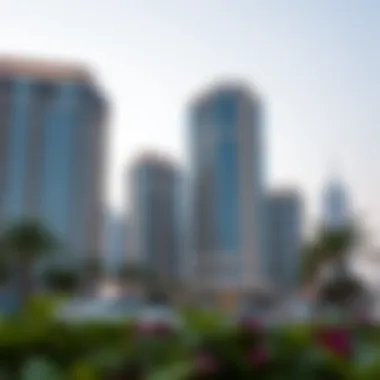
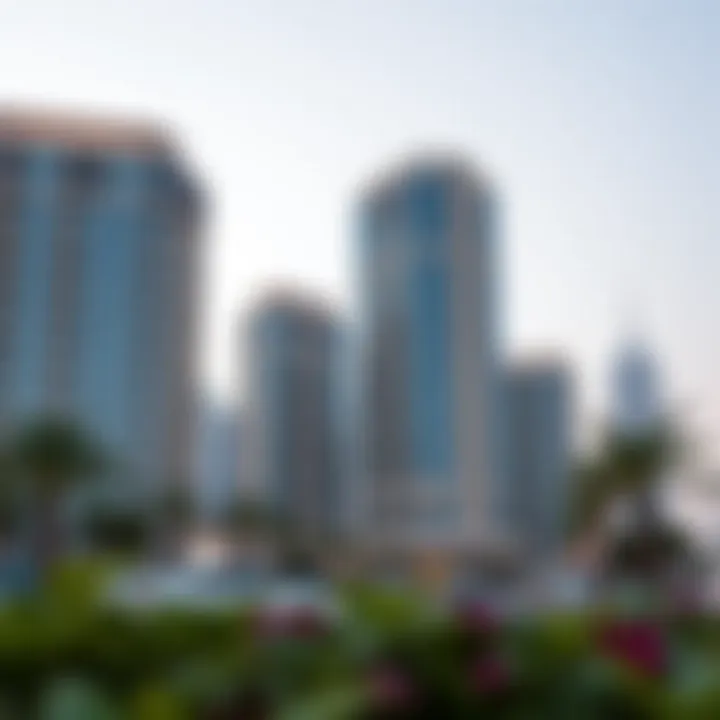
Future Development Plans
Looking ahead, several future development plans associated with the Al Ras Building are on the radar that could further enhance its investment potential:
- Infrastructure Improvements: Upcoming infrastructure projects, such as expansions in public transport and enhancements in pedestrian access, aim to promote ease of movement and connectivity. With more foot traffic, nearby businesses could expect an increase in customer bases, indirectly boosting property value.
- Mixed-Use Developments: Proposals for mixed-use developments in the surrounding area have garnered attention. This shift not only offers diverse amenities but also elevates the desirability of both living and retail spaces. Investors looking to tap into that market may find a wealth of opportunity.
- Government Initiatives: The Dubai government’s proactive measures in enhancing the urban environment and catering to both tourists and residents have laid down a promising groundwork for investment. Initiatives such as the Dubai Urban Master Plan aim to shape a sustainable and responsive urban framework, further solidifying the potential uplift in the area.
In summary, the Al Ras Building stands as a beacon of potential, with favorable pricing trends and ambitious development plans shaping its future. Investors can capitalize on these insights to make informed choices in a market that continuously adapts while thriving on its historic roots. As the landscape evolves, understanding these trends is imperative to harnessing the full potential of this landmark structure.
Challenges and Considerations
In the context of the Al Ras Building, examining the challenges and considerations is crucial for stakeholders involved in its development and maintenance. This section sheds light on the regulatory frameworks that govern such structures and the economic implications that follow. Moreover, understanding infrastructure limitations helps to gain a comprehensive view of how these elements intertwine to influence the building's viability and attractiveness to investors and residents alike.
Regulatory and Economic Factors
When it comes to real estate in Dubai, regulatory and economic factors often shape the landscape. Dubai has a stringent set of regulations that aim to uphold the quality and safety of its urban developments. For the Al Ras Building, compliance with certain guidelines is non-negotiable. This includes zoning laws, safety codes, and environmental regulations, which are critical not just for the integrity of the structure, but also for its market value. Failing to meet these requirements can result in hefty fines or, worse, project cancellations.
In addition, the economic climate plays a role in determining the viability of such investments. Factors such as supply and demand, interest rates, and real estate trends can make a hefty dent in investment prospects. As the world watches Dubai evolve, the economic backdrop is a mixed bag. Some see a bright future, while others fear fluctuations could bring uncertainty. Stakeholders must remain savvy, adapting to the winds of change in this vibrant market.
"Understanding the regulatory aspects and economic landscape is half the battle won in real estate investment."
Infrastructure Limitations
Infrastructure limitations present another layer of consideration when analyzing the Al Ras Building. While the structure stands out with its architectural charm, the surrounding infrastructure can significantly affect its usability. Access is paramount. A lack of nearby public transportation options can make daily commutes a hassle, which could deter potential residents or businesses.
Moreover, the area's current utilities and amenities must handle the expectations set by modern living standards. For instance, services like water supply, electricity availability, and internet connectivity are essential for attracting tenants. If these factors fall short, they could undermine the potential allure of the building.
In essence, the challenges posed by regulatory issues and infrastructure limitations create a more complex picture for stakeholders. Addressing these challenges head-on can pave the way for a brighter future for Al Ras Building and those looking to invest or reside within its walls.
Culmination and Recommendations
The exploration of the Al Ras Building extends beyond its striking architecture and distinctive role in Dubai's skyline. As with any significant urban structure, understanding its context and implications is vital for potential stakeholders, including investors and residents. In summarizing the insights drawn from this analysis, the Al Ras Building exemplifies a multifaceted opportunity nestled in a thriving environment of commerce and community. Its history, architectural details, and location intertwine to form a narrative that is as compelling as it is informative.
Summarizing Key Insights
Al Ras Building stands as a testament to the evolution of Dubai’s urban fabric. With its strategic positioning in the heart of the city, it serves not just as a physical structure but as a vibrant hub that bridges cultural, commercial, and residential spaces. Key insights include:
- Architectural Importance: The design elements showcase a blend of modernity and traditional aesthetics, capturing the essence of Dubai’s ongoing evolution.
- Historical Significance: As a cornerstone of the local community, it has contributed to the cultural tapestry of the area, reflecting the changes in demographic and urban dynamics over the years.
- Economic Impact: The Al Ras Building plays a critical role in the local real estate market, influencing property values and attracting business opportunities in the surrounding neighborhoods.
These elements underscore its significance not just as a building, but as an integral part of Dubai's identity that continues to shape its trajectory.
Advice for Prospective Investors
Investing in properties like the Al Ras Building can be immensely rewarding, yet it requires due diligence and strategic insight. Here are several key considerations for prospective investors:
- Market Trends: Keep an eye on the evolving real estate landscape in Dubai. Continuous development in infrastructure and amenities around Al Ras can lead to appreciation in property values.
- Community Engagement: Understanding the demographics and community needs around Al Ras is vital. Engage with local residents and businesses to gauge the vibrancy of the area and future potential.
- Regulatory Environment: Familiarize yourself with local regulations affecting property ownership and business operations. Navigating these effectively can help streamline your investment process.
- Long-term Vision: Approach your investment with a long-term perspective, considering the adaptability of the building and surrounding area to future urban plans.
"The best way to predict the future is to create it." — Peter Drucker
For further reading on Dubai’s real estate trends, you can visit sources such as Wikipedia and Britannica. More insights can also be gathered from discussions on platforms such as Reddit where locals share their experiences.



